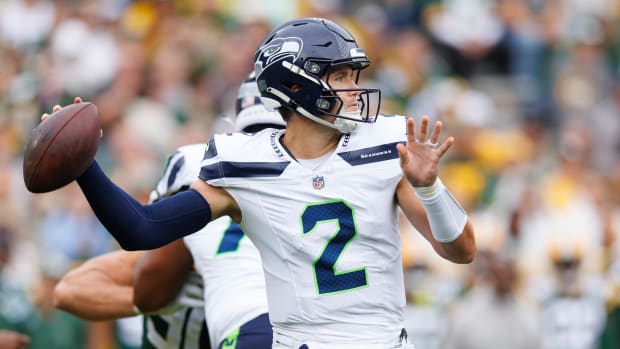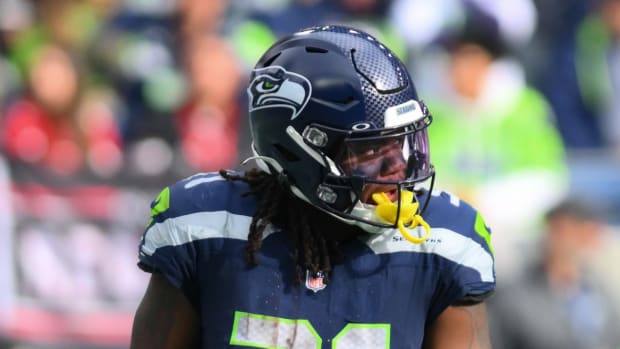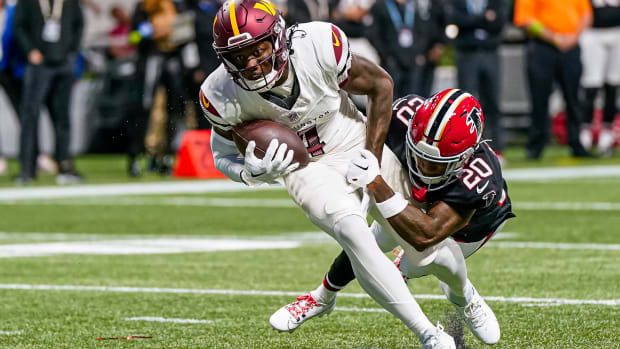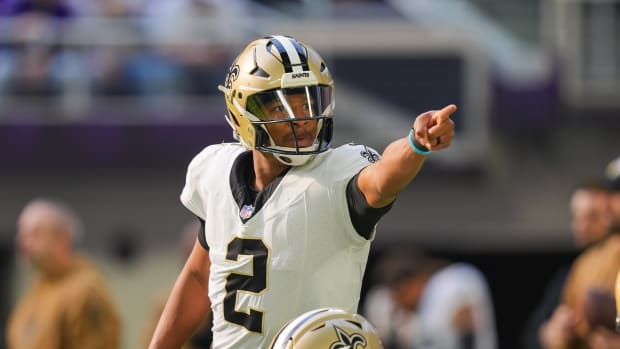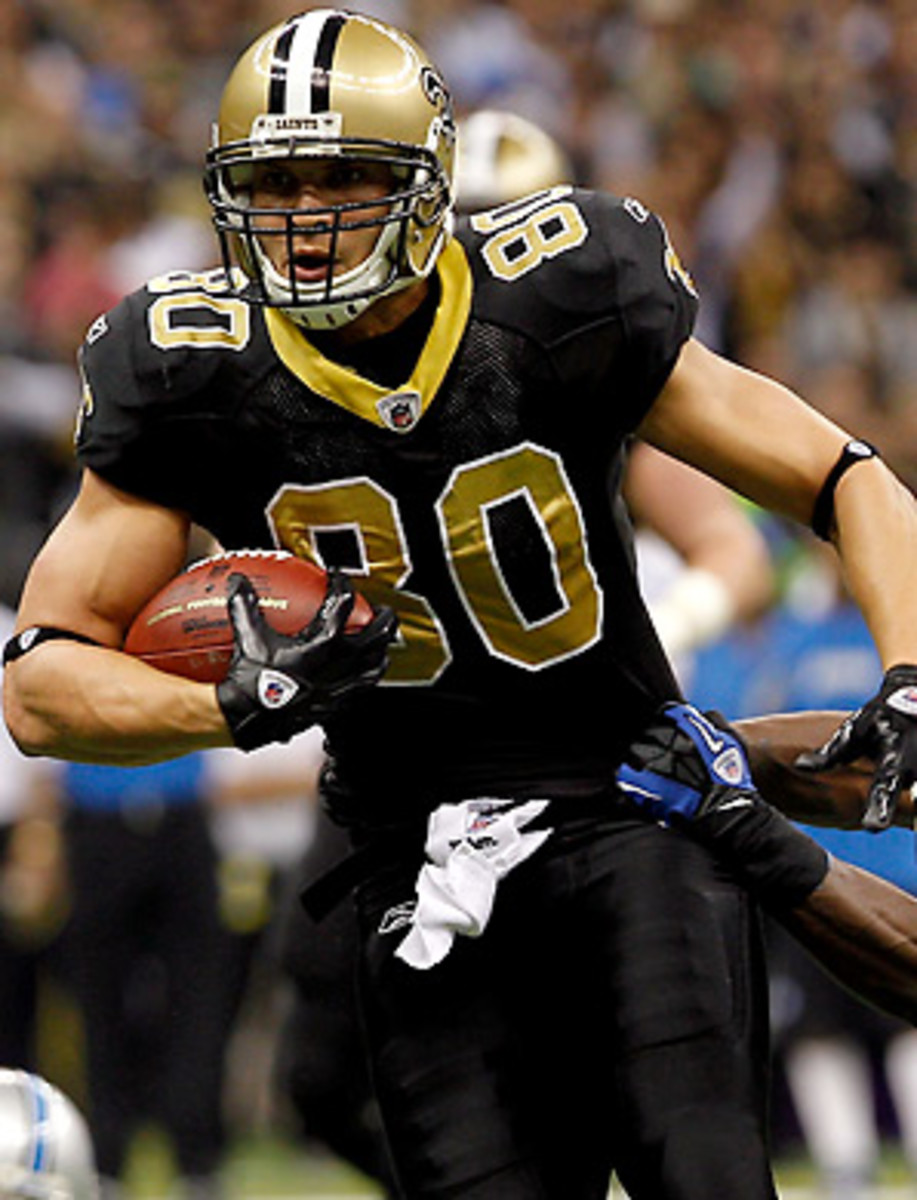
Graham uses sad past, basketball to join ranks of elite tight ends
The first time Saints tight end Jimmy Graham was told he could play in the NFL he thought the person was crazy. Graham hadn't so much as caught a pass in a game since he was in the ninth grade. Yet, almost four years into a college basketball career that was about to send him to a pro league in Europe, a former NFL quarterback was face-to-face with Graham, telling him he could be a playmaker in pro football.
"I looked at this old guy [and thought], What is he talking about?" Graham said. "This guy is delusional right now."
After his freshman year in high school, Graham moved to a school that didn't offer football. A switch to basketball led to a scholarship to play power forward at the University of Miami. Though not a star, Graham used his athleticism, size and toughness to generate some interest from the NBA and an offer to play professionally in Spain. Before hopping a plane overseas, though, Graham decided to explore a role in football one more time, which school president Donna Shalala had been imploring him to do regularly after basketball games. So Graham, who had already caught the attention of then-coach Randy Shannon, sought the advice of ex-Miami quarterback Bernie Kosar, a 12-year NFL veteran and now a member of the school's board of trustees.
"We had some similar friends and I heard he was trying to get in touch with me," said Kosar. "So one day we were hanging out in a backyard with a bunch of them and we start playing catch. He's got as good a pair of hands as anybody I've thrown to, and I've played in AFC Championship games.
"Then I started talking about routes and he seemed to pick it up. And with that physical presence and the way he uses his body, I could throw it 11 feet in the air and he'd still jump up 12 feet to get it. I kept telling him, 'Jimmy, not only are you going to be a great player, you're going to be a superstar. He looked at me like I was an idiot or trying to be nice. But I just believed it from the first time I threw to him."
Kosar would spend the next few months throwing to Graham, traveling to various high school fields around Miami to run posts and fades, to talk about how to use his hands and how to get separation from defensive backs. "We worked on the release and [depth] of the routes, and that whether you bow out to the corner or do a middle read vs. a Tampa-2 or a hook, it should all look the same," Kosar said. "He was like a sponge, trying to listen, trying to get the footwork down. "Early on he wasn't sure if he was doing it right. I'm not sure he was ever really confident because he'd never really done it. Now he knows he's good, he knows he's going to get open, he knows he's going to catch the ball."
This season, Graham caught the ball more than anyone in the NFC except for Roddy White. He also joined Pats tight end Rob Gronkowski (1,327 yards) in surpassing Kellen Winslow's single-season tight end yardage record (1,290) with 1,310 yards receiving of his own. And most important for a Saints team two games from the Super Bowl, Graham has become the most-trusted target for Drew Brees, who will face a Niners defense in Saturday's NFC divisional playoff game that ranked among the top 10 in limiting yards per pass attempt.
Standing 6-foot-6 with the ability to dunk a basketball has its advantages, even in the NFL, but Graham's rise has required a lot of study. After a rookie season spent behind Jeremy Shockey on the depth chart, Graham went to the NFL's version of summer school. Saints linebacker Jonathan Vilma led Graham through workouts five days a week and quarterback Drew Brees spent more than six weeks putting him through routes, discussing coverages and explaining how he progresses through his reads as a QB.
"I learned everything," Graham said in a recent phone interview. "When I got drafted, I had only played six months of football. Last year, I would run a route as fast as I could and do exactly what the play sheet said. Now, I'm more comfortable with the plays, with the concept of plays. In my routes I have more of a feel because I know what defenses are trying to do and who has me in man-to-man or zone coverage."
With only 13 games of Division I play on his resume, Graham also made efforts to study the mechanics of his position. Throughout his rookie season, the then-24-year-old analyzed a different opposing tight end each week. "I took notes on every catch they made the prior year and everything they did well and didn't do well."
Like two of the players he watched, Tony Gonzalez and Antonio Gates, Graham has learned that having played basketball translates well to catching NFL passes, assuming a player can grow accustomed to the added contact.
"Most basketball players have great footwork and great hand-eye coordination, so while I went from being a shorter power forward to being one of the tallest people on the field, I still have great body awareness," Graham said. "Those things help to really attack a ball when it's in the air. There are a lot of jump balls, where you are going across the middle and the quarterback has to get it over the linebacker but he also has to keep the ball down because there are two safeties bearing down on you. So you have to go up and attack the ball aggressively, knowing that it's going to be a big hit but it's also going to be a big catch.
"[But] I was a pretty physical basketball player who looked to lay the wood on people. If somebody drove to the basket I was either going to throw the ball out of bounds or throw him out of bounds. Even now, when I catch the ball, I'm not thinking about running around somebody; I'm thinking about running through people."
Graham, now nearing the end of his second season in the league, has forced coaches to scheme around his size, which is too big for most cornerbacks, and his speed, which is too fast for many safeties. "Teams will roll coverage to him and bring the safety down," said a scout. "And they'll try to make sure the defensive end gets a piece of him before he gets off the line of scrimmage. But that's the problem; New Orleans will take Graham off the line, and once you roll the safety toward a tight end, then you get Devery Henderson going and Robert Meachem running a crossing route and Lance Moore on the outside working against a corner one on one.
"It's a perfect situation for Graham. He's already a mismatch, and when you put him in a system that spreads guys out like they have in New Orleans, it's extremely hard to game plan for a guy like that."
That NFL scouts even know Graham is a fact that didn't seem likely when, at 11, Graham was sent by his own mother to live in a group home. He was not a troubled kid, but his mother struggled with the strain of raising multiple children. So, much like his older sister, he was cast out, in his case to a home for troubled teens, with his clothes packed into garbage bags. Soon it became clear to him that the facility was designed to treat teen boys who had run afoul of the law. "When I first got [to the group home] it was difficult," Graham said. "I blamed the world. But slowly, it started to sink in that I control my own destiny. I focused on what I would do when I got out."
Nine months of beatings, black eyes and tear-filled calls home convinced Graham's mother to bring him home to Goldsboro, N.C., though she left him largely on his own to feed and clothe himself. "It made me grow up at a very young age," Graham said. "I had to look at the mirror and dry the tears and tell myself that I needed to be a man. I couldn't go to a friend's house and hang out and play video games. It just wasn't like that."
In time Graham came to know Becky Vinson, a single mother who taught a Bible study class Graham attended once a week. Vinson eventually took Graham into her home to raise him after he told her class he worried his mother would place him in another group home. In his new surroundings, Graham improved what had been a dismal academic record and eventually earned a basketball scholarship to Miami. "Once I got to college, I didn't just want to pass, I wanted to excel. [My past] made me look in the mirror and say, 'I'm worth more than that.'"
Graham played four full seasons for the Hurricanes basketball team before Shannon told Graham he wanted him to play tight end in the fall of 2009. The results were modest but effective: 17 receptions and five touchdowns in 13 games. A trip to the Senior Bowl and a week of workouts with Tim Tebow sent his prospects rising, and in April 2010, the Saints drafted Graham in the third round, 95th overall.
"I saw Sean Payton at the Combine the next year and I asked him about Jimmy and he just smiled from ear to ear," Kosar said.
It seems Kosar may not have been so crazy after all.

































